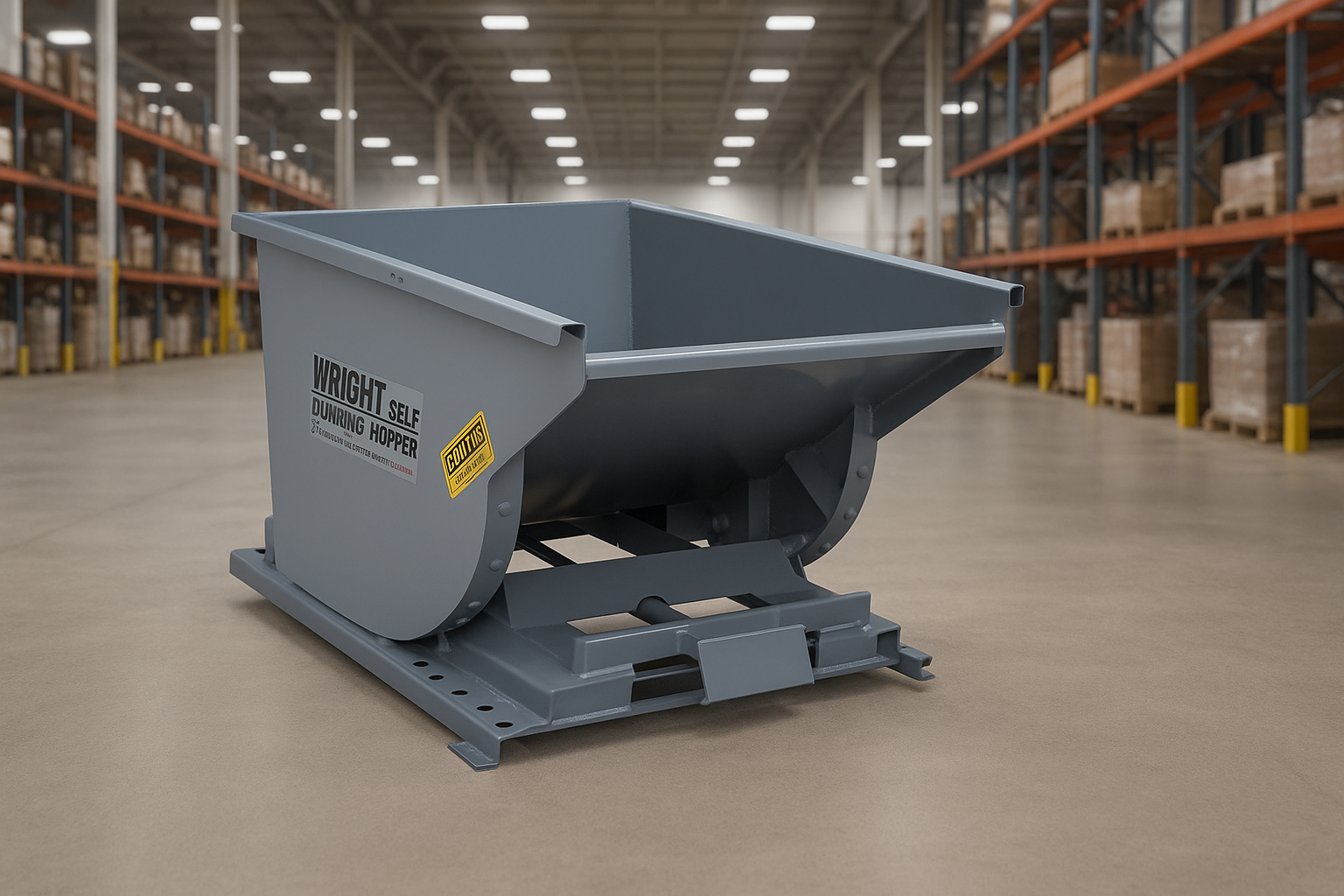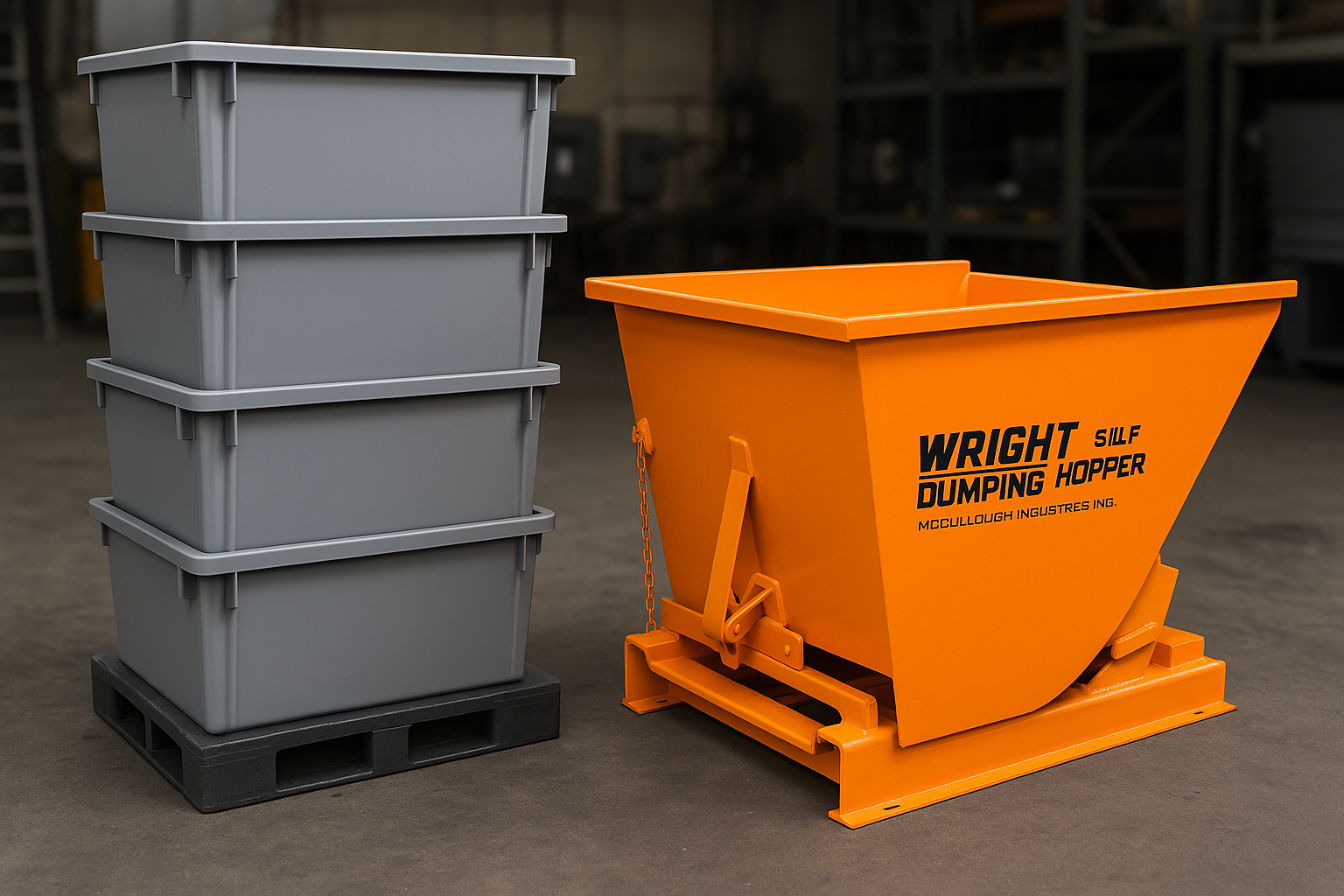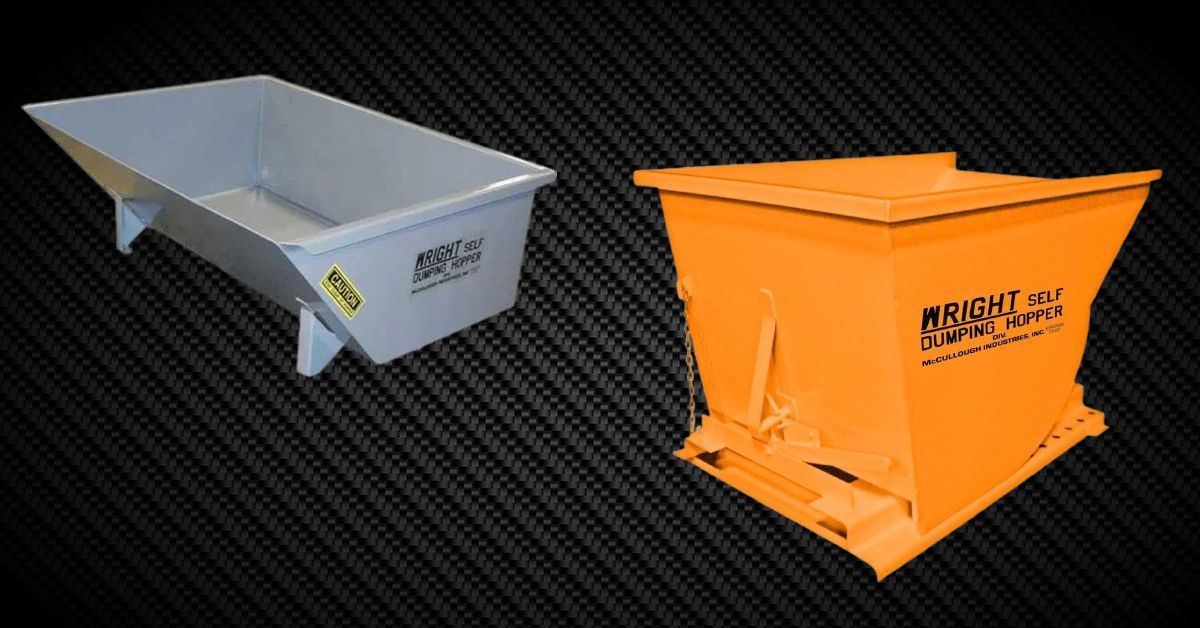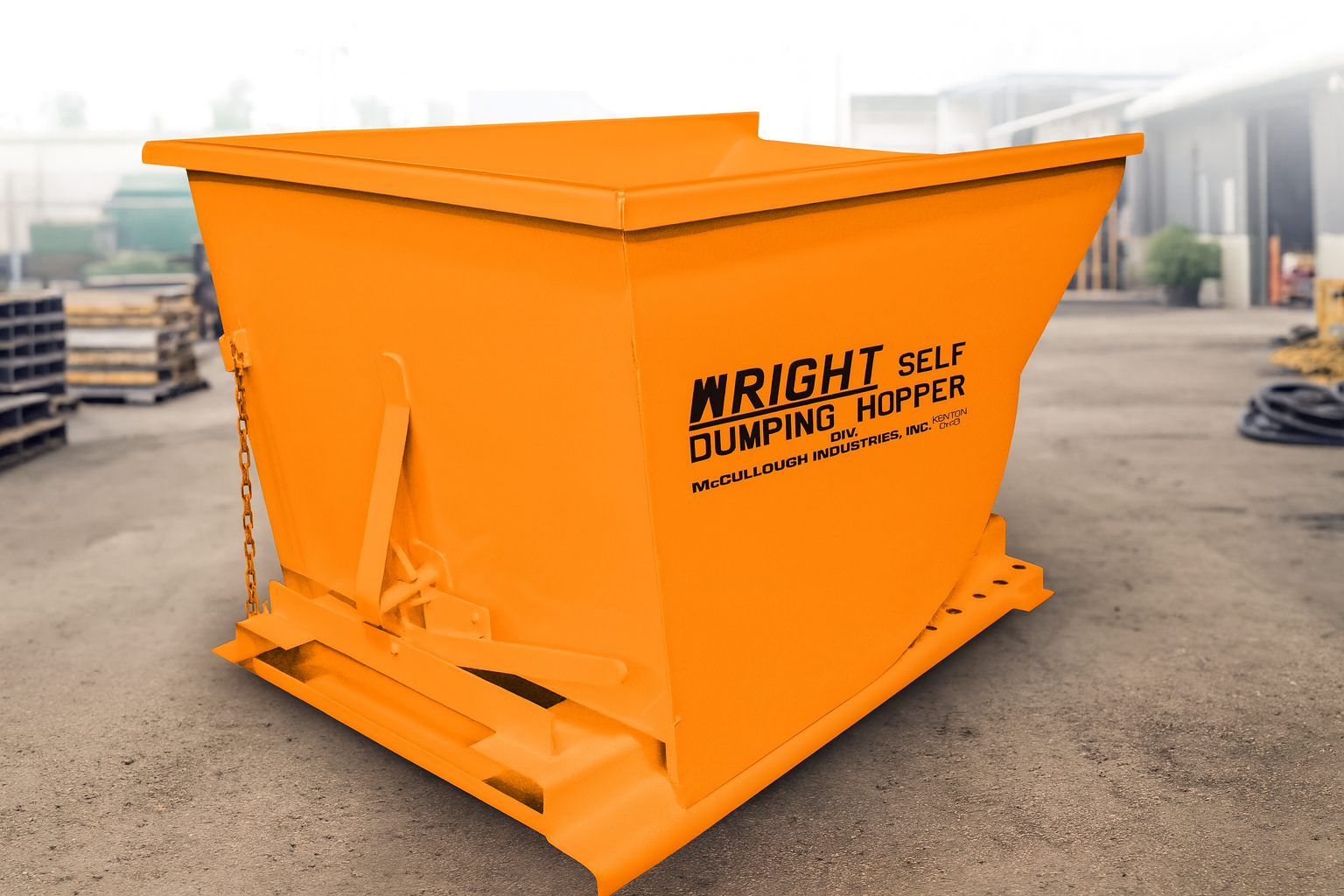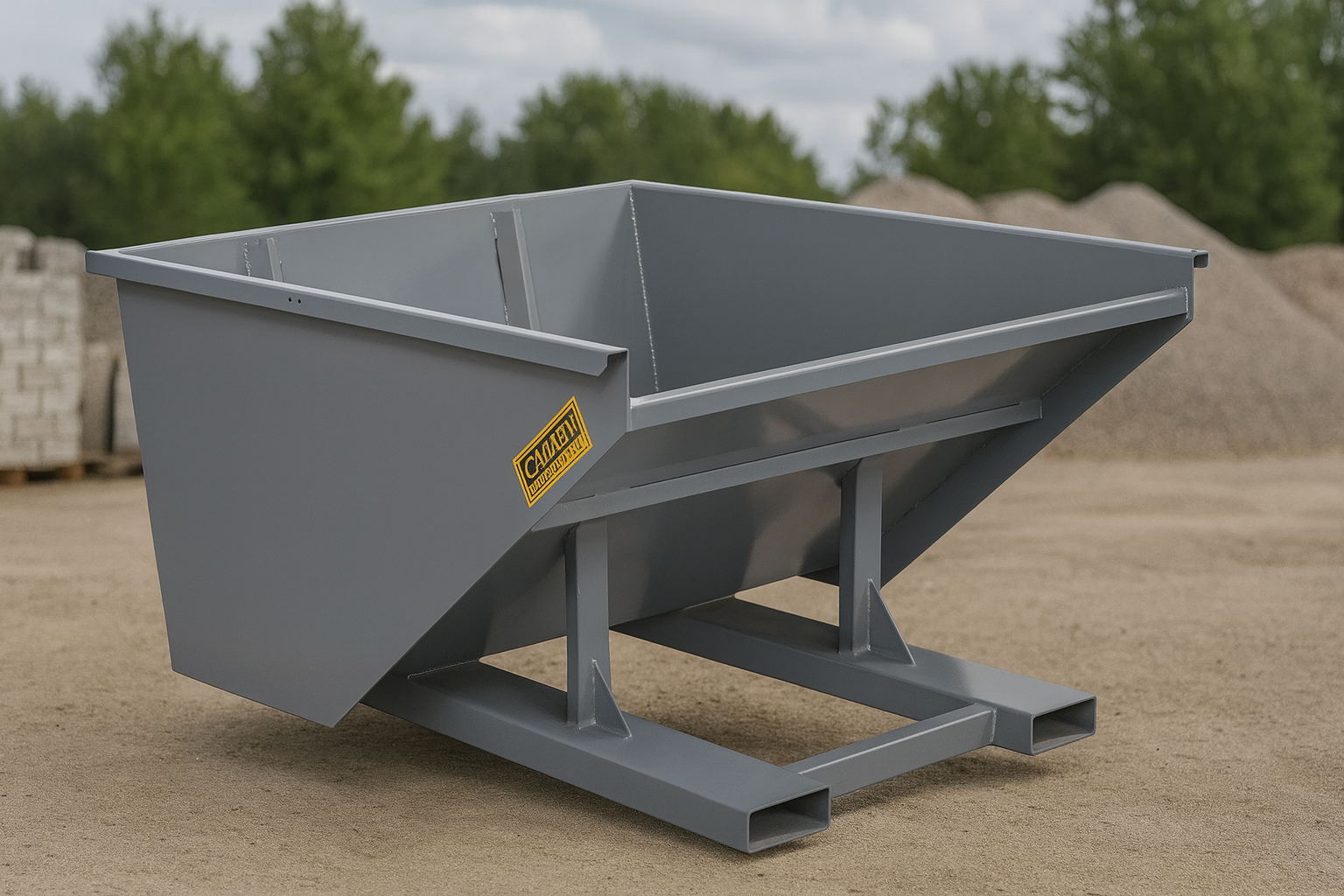
Managing Material Flow at Industrial Speed
In high-throughput industrial facilities, speed isn’t optional, it’s operational. Every step of your material handling workflow must support production cycles without delay. That includes your self-dumping hoppers. At McCullough Industries, we manufacture Wright® Self-Dumping Hoppers to keep up with the pace of modern fabrication, machining, recycling, and manufacturing operations.
Understanding and optimizing your hopper’s cycle rate is critical in reducing downtime, preventing bottlenecks, and maximizing safety. This guide explores how to calculate, manage, and improve your dump cycle efficiency with the right hopper configuration.
What Is Hopper Cycle Rate?
A hopper's cycle rate refers to how frequently it can be filled, transported, dumped, and returned to its starting position. For high-throughput plants, ideal cycle rates allow continuous scrap or material collection without delaying production or forklift operation.
A poor cycle rate doesn’t just slow down material removal. It increases forklift idling, floor congestion, and labor costs, all of which can impact throughput.
Factors That Influence Cycle Rate
Several factors determine a hopper's dump cycle efficiency:
- Hopper Size: Larger hoppers reduce trips but may take longer to fill and maneuver.
- Dump Angle: A steeper dump angle clears materials faster and more completely.
- Reset Mechanism: Auto-reset latches improve return speed.
- Floor Layout: Distance from production line to dump site affects overall cycle time.
- Material Type: Dense or sticky materials can affect dump time and require specialty coatings or shapes.
- Operator Handling: Trained forklift operators minimize misalignment or error-related delays.
Why High Cycle Rate Matters in High-Throughput Facilities
When your operation processes hundreds or thousands of pounds of material per shift, inefficiencies in scrap removal can pile up literally. Common bottlenecks include:
- Overflowing bins on the floor
- Forklifts delayed while waiting to dump
- Production pauses due to clutter or safety concerns
Using self-dumping hoppers with engineered dump angles, fast-reset features, and optimal capacities helps maintain a consistent material flow that supports high-cycle environments.
Wright® Hoppers Built for High Throughput
Our Wright® GEN II line and Low Profile Hoppers are ideal for high-volume material handling. These hoppers feature:
- Automatic reset frames: Reduce time spent resetting latches after each dump
- Positive stop dump angles: Prevent over-rotation and speed up return positioning
- Reinforced fork pockets: Withstand repetitive, high-cycle forklift use
- Leak-resistant seam welds: Essential when handling fluid-heavy or chip-laden scrap
We also offer custom models with larger fork pockets, extended pour lips, and drip trays for high-frequency environments.
Cycle Rate Estimation Table
| Hopper Type | Capacity | Dump Angle | Estimated Cycle Rate (Trips/Hour) |
|---|---|---|---|
| GEN II 1.0 cu yd | 1,000 lbs | 38° | 12–15 |
| Low Profile 0.5 cu yd | 800 lbs | 40° | 15–20 |
| Bump Release 1.5 cu yd | 1,500 lbs | 38° | 10–12 |
| Quick Attach 1.0 cu yd | 1,000 lbs | 42° | 16–18 |
Cycle rate will vary based on operator efficiency and distance to dump site.
Best Practices for Improving Cycle Rate
- Choose the Right Hopper Size: A hopper that's too small increases forklift trips. Too large, and it becomes difficult to fill quickly.
- Use Auto-Reset Models: Especially in high-throughput workflows, auto-resetting dump frames remove one step from the operator's process.
- Keep Dump Sites Close: Reduce distance and traffic between hopper and disposal area.
- Train Operators: Smooth, consistent forklift handling improves alignment and dump time.
- Preventative Maintenance: Ensure fork pockets, dump latches, and weld seams are inspected regularly.
Industries That Rely on High-Cycle Hopper Performance
McCullough Industries serves high-throughput facilities such as:
- CNC & fabrication shops generating constant chip scrap
- Warehousing & logistics managing fast-moving packaging waste
- Food processing plants where sanitation and speed matter
- Recycling centers requiring nonstop material staging and removal
- Aerospace & defense contractors focused on uninterrupted part flow
In these settings, cycle rate isn’t just a metric, it’s a key to profitability.
Designing a Dumping Workflow for High Speed
Your hopper should integrate seamlessly into your production flow. We recommend planning with these elements in mind:
- Staging Points: Position hoppers close to collection areas.
- Dump Zones: Create short, safe forklift lanes to disposal points.
- Swap-Out Strategy: Keep extra hoppers on standby for instant replacement.
- Cycle Mapping: Monitor trip frequency and adjust shift schedules or hopper sizes accordingly.
FAQs About High-Throughput Self-Dumping Hoppers
How do I know if my cycle rate is too low?
If your operators are waiting on hopper availability, bins are overflowing, or cleanup causes production pauses, you may need to increase hopper efficiency.
What hopper is best for small but frequent scrap loads?
Low Profile or Stackable Rotating Totes are ideal for tight spaces and frequent dump cycles.
Can I improve throughput with Quick Attach hoppers?
Yes. Quick Attach Hoppers eliminate the need for forklifts and can drastically reduce material handling cycle time.
Do larger hoppers always improve cycle rate?
Not necessarily. Large hoppers take longer to fill and may require multiple operators. It’s important to match hopper size with material flow and floor layout.
Title or Question
Describe the item or answer the question so that site visitors who are interested get more information. You can emphasize this text with bullets, italics or bold, and add links.
Let’s Optimize Your Workflow
At McCullough Industries, we build Wright® Self-Dumping Hoppers to support your plant's performance goals. From GEN II models to Low Profile and Quick Attach solutions, we tailor every product to match your throughput demands, floor plan, and team.
Request a quote or consult with our team to assess your facility’s ideal cycle rate. Let’s build a hopper system that keeps your operation moving at the pace your customers demand.

